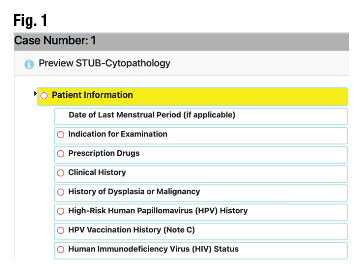First synoptic for cytopathology
Sana O. Tabbara, MD; Lananh Nguyen, MD
Abha Goyal, MD; George G. Birdsong, MD
August 2022—The protocol for the reporting of cervicovaginal cytology, the first in a series of CAP cytopathology protocols, became available for use in a synoptic format on June 22 (https://capatholo.gy/3uHusnU).
This protocol is a collaborative effort, based on input from past and present members of the CAP Cytopathology Committee and prepared in conjunction with the CAP Pathology Electronic Reporting Committee. It was presented via webinar to the CAP House of Delegates on March 31. A two-week open comment period followed; all comments were reviewed and appropriate changes were incorporated into the protocol. Although the protocol is in a synoptic format, it is meant to replace existing gynecologic cytopathology/Pap test reports and not be an add-on to the report. The protocol will not be a requirement for accreditation at this time.
The aim of this comprehensive protocol is to improve the completeness, clarity, and portability of Pap test reporting while being mindful of the wide range of practice settings in which the data in the report is generated and to which it is disseminated. This protocol uses the standardized Bethesda System for Reporting Cervical Cytology1 and incorporates clinical history and ancillary testing results that may prove crucial in managing the patient. For instance, it includes the history of dysplasia/malignancy/ HPV infection as well as details on concurrent HPV testing, if any. Including this data in the report will facilitate risk-based management of patients, as recommended by the 2019 American Society for Colposcopy and Cervical Pathology management consensus guidelines.2 The protocol also features HPV vaccination history, which is important information in understanding the impact of the vaccine and possibly modifying the screening strategy in vaccinated individuals in the future.

 CAP TODAY Pathology/Laboratory Medicine/Laboratory Management
CAP TODAY Pathology/Laboratory Medicine/Laboratory Management
